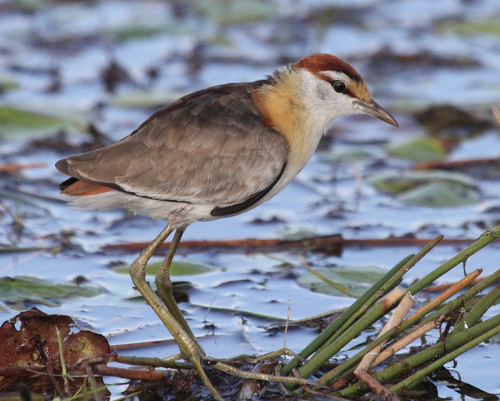
African Jacana
The African Jacana, Microparra capensis, gracefully strides across lily pads with its long toes. Found in vibrant African wetlands, this polyandrous bird captivates with its chestnut and blue plumage, playing a vital role in the ecosystem by controlling insect populations.
Black, White, Chestnut, Grey-Brown
Color
Least Concern
Conservation Status
Unknown
Population Trend
Characteristics
Microparra capensis, known as the African Jacana, is a wader bird notable for its elongated toes and claws, allowing it to walk on floating vegetation. It inhabits freshwater wetlands across sub-Saharan Africa, exhibits polyandrous breeding behavior, and is known for its striking chestnut and blue plumage.
Distribution Range of the African Jacana
Microparra capensis, commonly known as the African Jacana, is native to sub-Saharan Africa. Its geographical distribution spans across eastern and southern Africa, including countries such as South Africa, Botswana, Namibia, Zimbabwe, Mozambique, Kenya, Uganda, Tanzania, and Ethiopia. It is also found in the central parts of the continent, including the Democratic Republic of the Congo and northern Angola.
African Jacana's Habitat
Environmental Conditions
The African Jacana typically inhabits freshwater wetlands, including marshes, ponds, lakes, swamps, and slow-moving rivers. These environments are characterized by warm climates and are often rich in floating vegetation such as water lilies and other aquatic plants.
Ecological Niche
The species is adapted to life on water surfaces, relying on its long toes and claws to walk on floating vegetation. This ecological niche allows the African Jacana to feed on insects and other invertebrates it finds among the vegetation. It plays a vital role in the ecosystem by controlling insect populations and participating in the food web as both predator and prey.
Copyright @ Nature Style Limited. All Rights Reserved.
 English
English